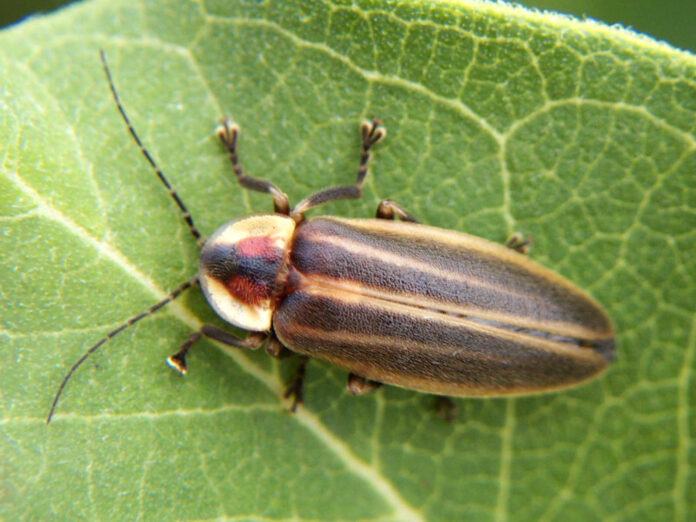
BY HARRY WEEKES

Whatever special alchemy governs fireflies in Connecticut, it is the long humid days of July when the cauldron bubbles most.
Two minutes from my in-laws’ house is a damp meadow, ringed by various layers and levels of trees. When it gets completely dark, we pull our car to the side of the road, climb out, and stand. It takes a couple of seconds for the headlight shine to loosen its grip on vision, but I hesitate to say that your eyes ever adjust to what’s in front of you.
The collective noun for beetles (which fireflies are) is colony or swarm. I think hallucination is more accurate.
Looking across the field is like standing next to an enormous and full stadium at night, where all of the people are taking pictures with the flash on, and somehow you have grown to gargantuan size. This feeling is most obvious when one of thousands of fireflies lights up within inches of your face, its disorienting proximity bends space, adding a kind of immediate relief as the near beetles pop out and the others recede. Little living lights flicker on the ground, in the grasses, throughout every level of the visible canopy, and in the air, an incessant mixture of stationary pulses and miniature tracers. Somewhere there are frogs croaking, but it doesn’t seem to be right here. In fact, fireflies produce this dizzying array of lights without any noticeable sound, which adds an ethereal quiet that somehow manages to muffle the entire space.
I am almost overwhelmed with questions: How many are there? Where do they spend their days? Why don’t we have these in Idaho? Why does this all end in July? How does someone actually study this? What did the American Indians think of these displays? This onslaught has an interesting and tangible reverse effect on me, which is this: I actually don’t want to know the answer to these questions.
Believe me, there are lots of questions I do want the answers to: What’s up with all the shark sightings? Where are the jellyfish? And why has it been such a ‘cougar-y’ year at home?
But the case of the fireflies is different. Even as they conjure up a thousand questions, each burning as intensely and bright as the earnest little beetles in this field, there is something in their mystery that I don’t want to know, that I don’t want known. It is like a living wave of pure curiosity washes over me. Just as their winking appears to bend the physical space in front of me, they also expand my mental space, creating a truly awe-inspiring mysteriousness encapsulated in my final responses to one of my family’s questions: “Why do they do this?”
“We don’t really know.”
I let that linger, as the pat response of “communication” seems so completely unsatisfactory and simplistic in relation to the scale of what is happening in front of us. Then I add, “But they do.”
As I said, a hallucination of fireflies.
Harry Weekes is the founder and head of school at The Sage School in Hailey. This is his 47th year in the Wood River Valley, where he lives with his wife Hilary and their three kids—Georgia, Penelope and Simon—a nice little flock.


